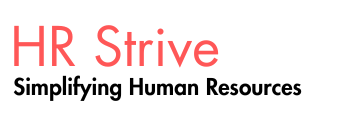Embracing a Global Mindset in HR
In today’s interconnected world, HR professionals must be able to think beyond borders. The Global Mindset competency is all about understanding and working effectively with people from different backgrounds—across cultures, countries, and perspectives. Whether your team is in one office or scattered across continents, having a global outlook is essential for inclusive and effective HR management.
Developing this mindset starts with understanding culture—not just in terms of language, dress, or customs, but also in how people view work, authority, time, and collaboration. HR leaders who cultivate a global mindset are better equipped to spot cultural nuances, break down barriers, and foster cross-cultural respect and teamwork. This isn't just good practice—it’s key to driving performance and innovation across a diverse workforce.
Building a Global Perspective in HR Work
HR professionals with a strong global perspective do more than acknowledge diversity—they actively shape policies and programs that embrace it. This includes:
-
Aligning HR practices with global trends: From labor laws and economic shifts to cultural expectations and remote work norms, a global HR lens ensures your policies are relevant and responsive wherever you operate.
-
Championing diversity and inclusion: Whether designing new programs or auditing existing ones, HR should ensure practices are inclusive, equitable, and fair to everyone—regardless of background or location.
-
Applying consistency with cultural sensitivity: While it’s important to be fair, it’s equally important to respect local customs, expectations, and laws. HR professionals need to strike a thoughtful balance.
-
Communicating across cultures: From policy translations to scheduling across time zones, global HR involves careful planning to make sure everyone is seen, heard, and informed.
Key Behaviors That Demonstrate a Global Mindset
HR professionals who embrace a global mindset tend to:
-
Keep up with international HR trends, economic conditions, and local labor laws to guide strategic decisions.
-
Weave inclusion and cultural awareness into every layer of HR strategy—from recruitment to retention.
-
Lead the way in building a workplace where differences are not just accepted but celebrated.
-
Promote equity by applying programs and policies fairly across diverse employee populations.
-
Recognize that diversity isn’t just a value—it’s a business advantage that fuels better ideas, stronger collaboration, and long-term success.
-
Use the organization’s diversity and inclusion values as a foundation for HR initiatives and business decisions.
-
Advocate for the connection between inclusive practices and organizational performance.
Putting It into Practice: Global HR in Action
Some real-world ways to embed a global mindset include:
-
Translating HR policies into local languages so all employees can understand their rights and responsibilities.
-
Scheduling meetings at times that accommodate different time zones to ensure inclusivity.
-
Creating global onboarding experiences that blend core company culture with local relevance.
-
Tailoring benefits or engagement initiatives to meet regional needs without losing the spirit of fairness.
Final Thought
Having a global mindset isn't about knowing everything—it’s about staying open, aware, and willing to learn. As workplaces become more global, HR’s ability to navigate cultural complexity and champion inclusion will define its success and strategic impact. With the right mindset, HR can be the bridge that connects people across boundaries and builds a truly inclusive workplace culture.

No comments:
Post a Comment